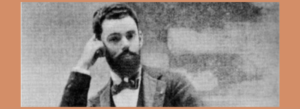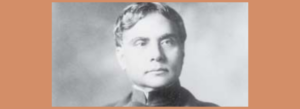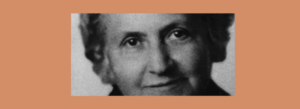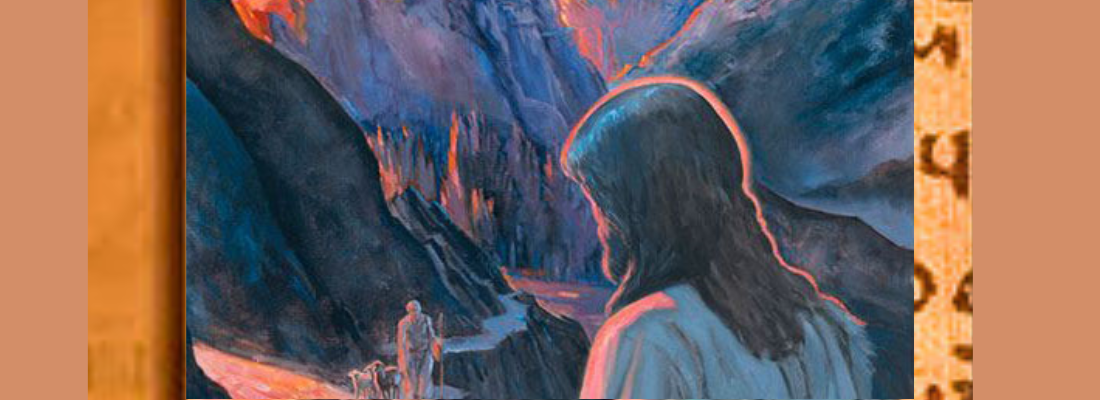Written by Lee A. Ellingson —
The canonical Bible gives us no information about the activities of Jesus Christ from ages 13 to 30 when his ministry began in Palestine. Considering the importance of the Bible in shaping Western Civilization, this is indeed a mystery. There has been much speculation about those lost years, but hard evidence has been difficult to come by. Elizabeth Clare Prophet has written a compelling book, which relates four accounts by Nicolas Notovitch, Swami Abhedananda, Nicholas Roerich, and Elizabeth Caspari about an illusive document hidden in a remote monastery in Tibet. The culture and background of these four people could not have been more different, and yet, they provide four narratives that are surprisingly similar. Mrs. Prophet explores these narratives in detail in a remarkable book that reads like a mystery novel.
She opens the book with the following lines:
Imagine you are a detective. An unusual case comes across your desk. You open a yellowed folder. It isn’t exactly a case of mistaken identity or a missing person. It is a missing background—some lost years. And the particulars are spare…You take a deep breath and exhale slowly. This is no small case. An investigation into the past of one of the most influential persons in history. You look up from your desk, past the typewriter to a calendar on the wall. It is an old, old case. You return to the file…It’s night. The city is asleep. You’re tempted to close the file and send it back. But you are intrigued: Where was Jesus during the lost years? You walk to your desk, pick up the file, and go out into the dark looking for a lead (pp. 3-6).
It pulled me in. Who doesn’t like a good mystery? This is no stuffy treatise. It is a compelling read from beginning to end. And there are photographs, citations, and seventeen color plates by Nicholas Roerich. It is a scholarly book written in an engaging style. This is a story that could change much of what we know about one of the world’s most influential religions.
The Lost Years of Jesus

The book begins with a summary of what we know about the lost years. Beginning in the late nineteenth century, scholars began to critically examine the principal sources for what we know about Jesus—the Gospels. “Scholars discussed whether Jesus was a man or a myth or some of each; whether he came to establish a new religion or if he was an eschatological figure—a herald announcing the end of the world” (p. 7). The earliest known manuscripts are from the fourth century. And, it is impossible to know how much they have been changed (for whatever reasons) from the originals.
The discoveries of a Gnostic library at Nag Hammadi, Egypt, in 1945, and a fragment of a “Secret Gospel” of Mark in the Judean desert in 1958, indicate that the early Christians had access to a much larger “library” than the New Testament. Ever since the mission of Jesus, there has been a struggle to see who gets to control the narrative of his life. To complicate matters more, the early Christians did not care that much about what we call “history.” Scriptures were written for other purposes. The traditional account for the lost years is that Jesus lived a routine life in Palestine with nothing unusual to report. This appears to be more and more unlikely. The first popular book to challenge the orthodox narrative was written by Nicolas Notovitch and published in 1894.
Nicolas Notovitch

Nicolas Notovitch was a Russian aristocrat, author, and adventurer who traveled to India via Afghanistanin 1887. He wandered north to Kashmir and Ladakh (Little Tibet). He met some Buddhist monks who told him that Jesus had lived in Tibet and was known as Saint Issa or Buddha Issa. Moreover, there were documents in Himis and other monasteries which chronicled the life of Saint Issa. Notovitch went to Himis and was welcomed by the lamas. The head lama warmed to him and agreed to show him manuscripts referencing Issa. The lama translated the relevant sections, which Notovitch carefully recorded in his notebook. The manuscripts recounted that Jesus left Jerusalem at age 13, traveled through modern-day India, Nepal, and Tibet, and studied sacred texts.
He learned about Buddhism and Hinduism, incorporating elements of these religions into his teachings. The story was allegedly written three to four years after the crucifixion based on accounts brought to India by merchants who had witnessed the events. After he returned to Europe, Notovitch published the story in French in 1894 with the title, The Unknown Life of Jesus Christ. It was an immediate success. It was translated into English, German, Spanish, Swedish, and Italian. Needless to say, it was controversial. Mrs. Prophet writes in some detail about the various scholars and personalities involved in the controversy. One of the main players was Swami Abhedananda.
Swami Abhedananda

Mrs. Prophet thought Abedananda was the ideal kind of person to make an on-the-spot assessment of the situation at Himis. He was born Kaliprasad Chandra on October 2, 1886, in Calcutta, India. He was a precocious scholar versed in the literature of both East and West. For instance, he was thoroughly familiar with the Bhagavad Gita and John Stuart Mill’s System of Logic. For ten years, he explored Tibet, barefoot and without money. In 1896, he sailed to London where he began to preach about the Vedas and met many distinguished scholars including Max Müller, a critic of Notovitch. Abhedananda was well acquainted with The Unknown Life of Jesus Christ and was anxious to verify it. In 1922, he crossed the Himalayas on foot to study the manners, customs, and philosophy of Buddhism.
He recorded the events in his journal, later published as In Kashmir and Tibet, including excerpts from Notovitch’s book. After his arrival in Himis, he asked the lamas about the veracity of Notovitch’s tale. They assured him it was true. It should be emphasized that Abhedananda was notably different from the supercilious western scholars that visited Himis. Abhedananda was much closer to their culture. He put them at ease and was not likely to be taken in by any chicanery. In the words of Mrs. Prophet, “He was a disciple of Ramakrishna, a scholar, a preacher, a world traveler, and a one-time ascetic who lived for three months in a Himalayan cave at the source of the Ganges” (p. 45). Unfortunately, Abhedananda did not bring back photos or a copy of the original texts.
The next person in our drama is Nicholas Roerich. Nicholas Roerich was born into an aristocratic Russian family in St. Petersburg, Russia, on October 10, 1874. He attended St. Petersburg University and the Imperial Academy of Fine Arts simultaneously and received degrees in law and art respectively. He became internationally renowned as a painter, poet, archeologist, philosopher, diplomat, writer, critic, educator, set designer, and explorer. He has his own museum in New York City. He led several expeditions to Central Asia, including the Roerich Central Asiatic Expedition in 1925-1928, where he comes into our story. The objectives of the expedition were to create a pictorial record of the lands and peoples of Central Asia, study ancient monuments and religions, trace the migrations of nations, and collect ethnographic and linguistic material of inner Asia. During the trip, he painted over 500 pictures, some of which are reproduced in this book.
His son George had studied Persian, Sanskrit, Chinese, and Tibetan. This knowledge was invaluable in convincing the locals to reveal their myths and legends. Tibetans can be notoriously private to outsiders. Roerich was convinced that folklore often contained grains of truth and could offer clues to what actually happened in the distant past. He was impressed with the wide-spread legends of Christ’s sojourn in India, Ladakh, and Central Asia during the lost years. Christ was known as Saint Issa. Roerich questioned how an alleged recent forgery (Notovitch’s book) could have penetrated into the consciousness of the whole East. They went to Himis and inquired about the document seen by Notovitch. The lamas knew of such a document but did not know where it was. Elsewhere, he said he saw numerous documents that referred to Christ in the East and heard of many more. According to Mrs. Prophet, “In sum, Roerich’s writings do about everything that can be done to establish the existence and authenticity of one or more documents that describe Jesus’ sojourn in the East, short of actually retrieving one” (p. 53).
Elizabeth Caspari

Madame Caspari was quite the adventurer. In 1939, she and her husband, Charles, were on a pilgrimage to Mount Kailas, Tibet. The pilgrimage was organized and funded by another redoubtable woman, Mrs. Clarence Gasque, who had considerable interest in religion and spiritual matters. This was an extraordinary thing to do since travel across the Himalayas was not easy. Notably, the Casparis took photos documenting the entire journey including some of the same scenes described by Notovitch. They reached Himis in time to see the three-day festival held each year to commemorate Padma Sambhava. Due to the open-hearted and genuine natures of Mrs. Gasque and the Casparis, the lamas took to them and allowed them into their confidence. One day after the festival, Mrs. Gasque and Mrs. Caspari were sitting on the roof of the monastery and were approached by the librarian and two other monks.
The monks ceremoniously unwrapped several parchment leaves and said, “These books say your Jesus was here.” The women were unable to read Tibetan (Pali) but did take a photograph of the lama displaying the books. The women were unaware of the controversies surrounding the writings of the men previously mentioned. They did not go to Tibet to investigate the authenticity of any documents. The lamas showed the documents to the ladies on their own initiative. The spontaneity of this episode increases its veracity, in my opinion. As a bonus, Mrs. Caspari has allowed Mrs. Prophet to publish some of the photos in her book.
Contemporary India and China
The Communists overran Tibet in 1950. In 1959, the Communists destroyed or converted all monasteries to secular uses. If the original texts were still in Lhasa, they were probably destroyed. Fortunately, Ladakh is still controlled by the Indian government, not the Chinese, but tensions between the two countries is volatile and can change at any moment. Anyone wishing to visit Ladakh must obtain a permit, and of course, be willing to undergo the rigors of travel in the Himalayas. Because of its out-of-the-way location, the monastery at Himis generally managed to avoid being pillaged by invading armies and marauding bandits. It became a favorite location for the lamas to store their valuables and precious books. If you can obtain a permit and have the means for traveling there, you may still be able to go to Himis and look for the original documents seen by Notovitch and Caspari. However, the monks may not know where they are or not want to show them to you. It is now illusive as ever.
This is one of the most intriguing cases that has come across your desk in a long time. Should you accept it or send it back? Sometimes, walking helps you make decisions. You go out into the night. The sound of your footsteps echo through the deserted streets. Lampposts make pools of light in the enveloping darkness. The only place open is the all-night diner down the street. Fog begins to roll in from the bay. You pull up the collar of your trench coat. The dossier you just read is a bombshell.
What was Jesus doing during those lost years? Making wagon wheels in Nazareth? It hardly seems likely. Wouldn’t a man of Jesus’ attainment be making his mark in the world somewhere? Why not in the East? It all begins to add up. Should you go public? Your friend and enemy on the police force would scoff. Do you have anything that would hold up in court? Hard evidence keeps perversely disappearing. Do people in high places feel threatened by this case? Is there a cover-up? As the dawn begins to glow in the east, you decide to head back to the office. One thing you know for certain—you are determined to follow this case wherever it may lead.
Exhibits
The rest of Mrs. Prophet’s book consists of the following exhibits:
The Unknown Life of Jesus Christ including The Life of Saint Issa by Nicolas Notovitch with the author’s maps of his travels
The English translation of the key portions of Swami Abhedananda’s In Kashmir and Tibet
The reports and writings about Saint Issa collected in Nicholas Roerich’s books, Himalaya, Altai-Himalaya, and Heart of Asia, and sixteen of his paintings
The testimony of Elizabeth Caspari on her chance discovery of the texts with supporting photographs
Into the Night
The Lost Years of Jesus
Elizabeth Clare Prophet
On the discoveries of Notovitch, Abhedananda, Roerich, and Caspari
Summit University Press, 1984
https://store.summitlighthouse.org/lost-years-of-jesus-traderg/lost-years-of-jesus-trade


Thank you, Lee, for this wonderful book review of the Lost Years of Jesus!
Concepcion
Thank you for this review.